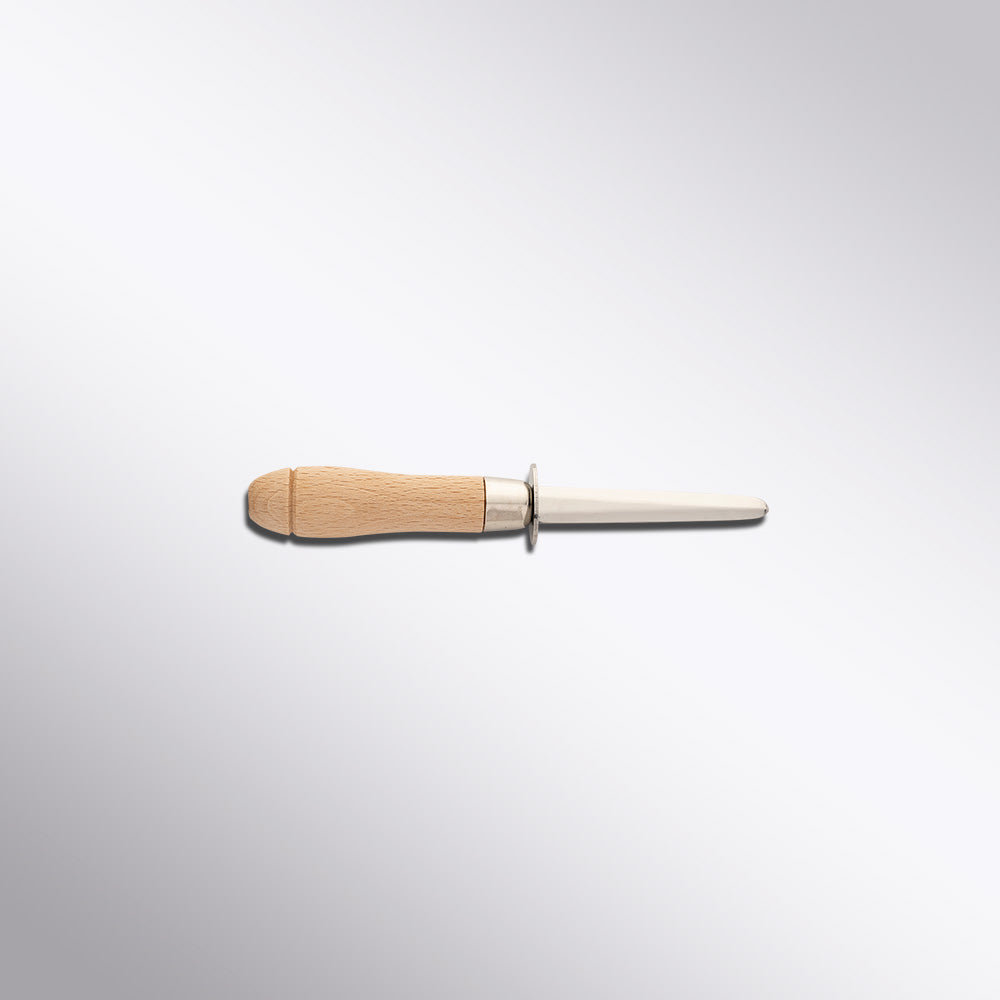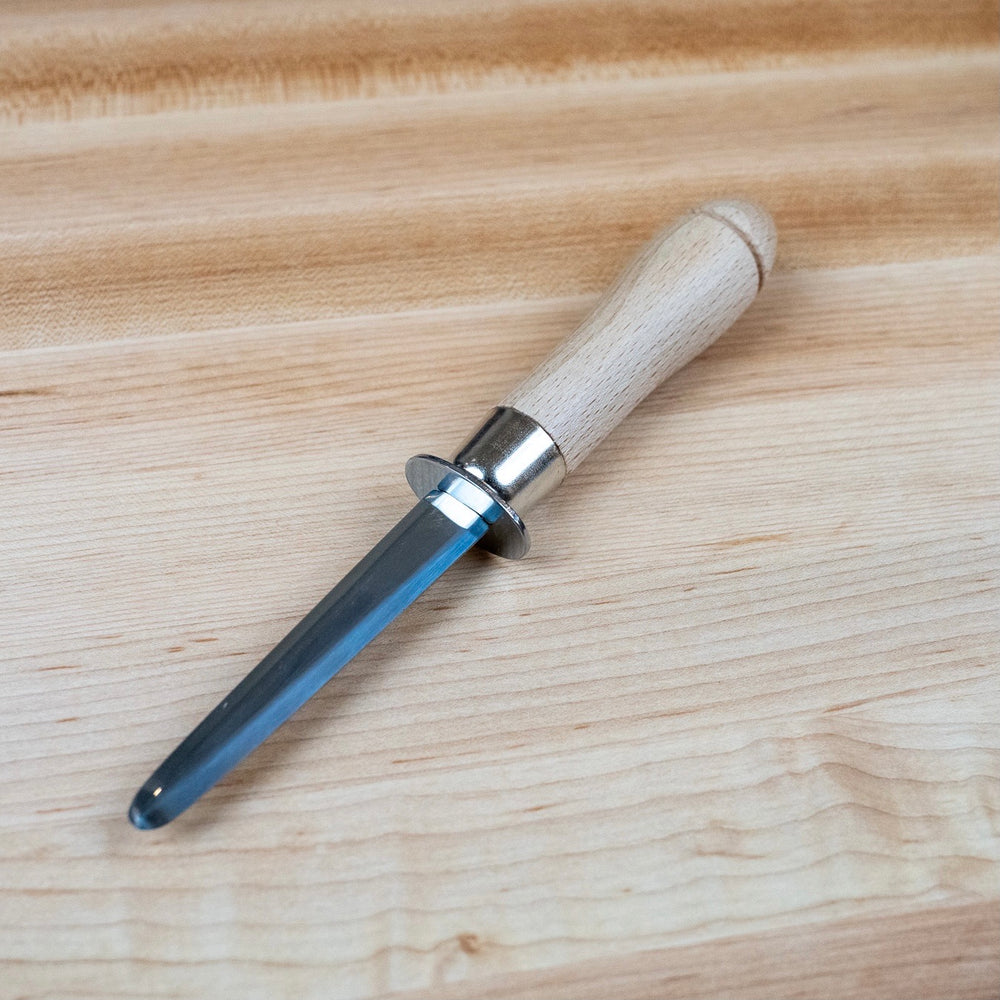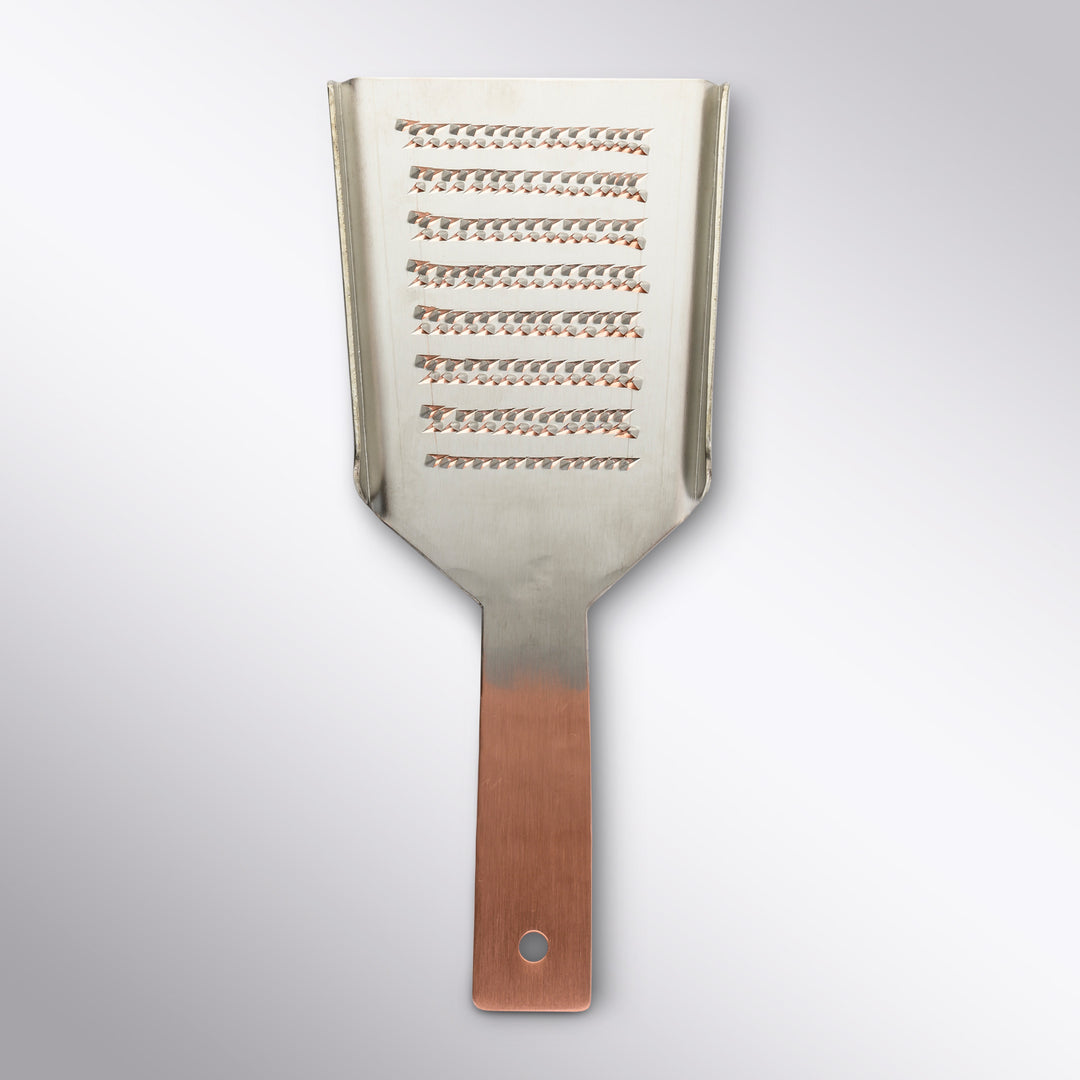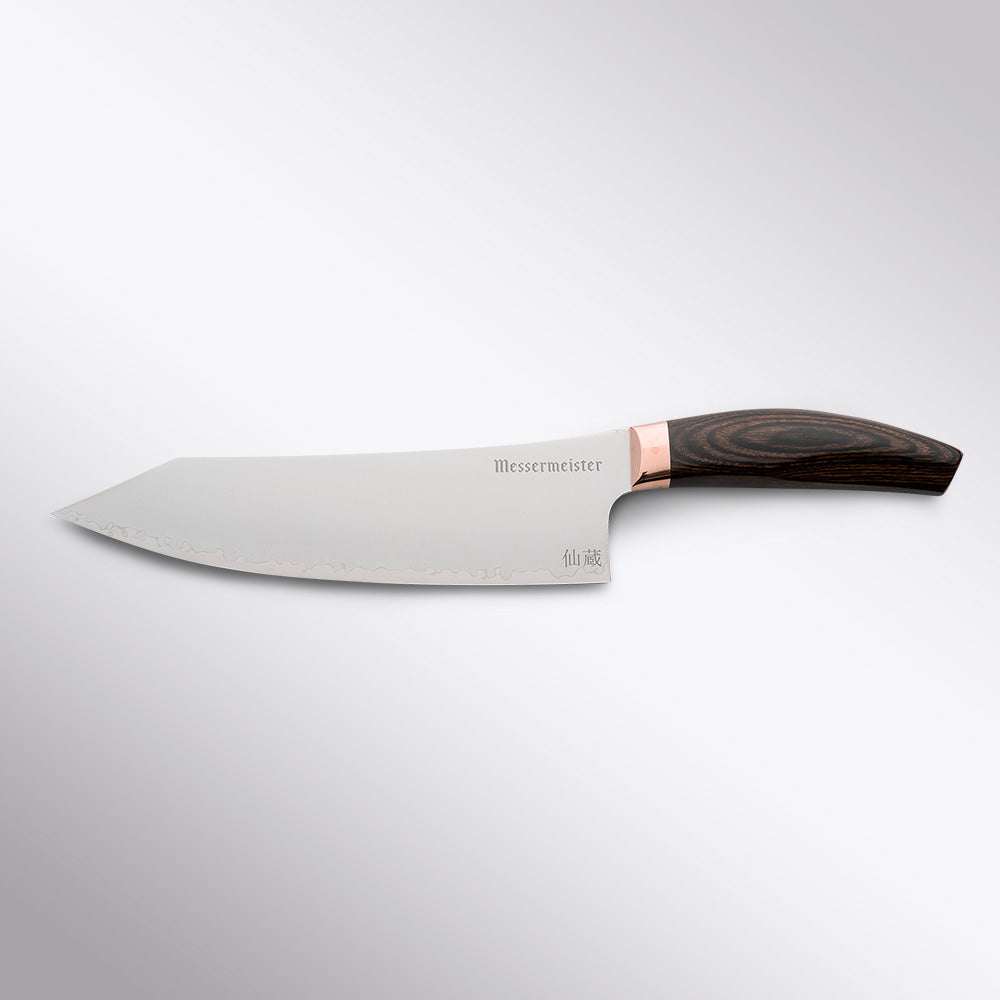The 3 Essential Kitchen Knives Every Home Chef Needs

Shopping for kitchen knives can be a daunting process. There are hundreds of retailers and so many different blades to choose from. Prices range from $20 to over $1000 per knife. For the pro chefs who know exactly what they want, navigating the buying process is easier than it would be for an average person. For the home chef, however, this process can be overwhelming. Whenever there are so many options, a zoom-out is necessary. This article will cut through the noise and provide the home chefs out there with a solid starting point when it comes to cutlery. By the end of this, we hope you'll have an understanding of the "bare minimum" needed to cover the majority of your kitchen knife needs.
One of the most common complaints from home chefs about their knife block is that they hate all but two or three knives. Or, there are too many repeats. Why do knife blocks often come with four Paring knives that range within one inch? How many home chefs need a Boning Knife? Are folks Frenching racks of lamb, doing crown roasts, trimming the silver skin from whole tenderloins, etc.? If you are, then fantastic, and you should add one to your quiver of knives. If not, start with these three knives that can help you accomplish just about anything that meals throw at you.

Chef's Knife: The workhorse of the kitchen
A Chefs Knife is the most versatile piece of cutlery in your kitchen and should be one of the first knives you add to your collection. It can handle everything from chopping herbs, dicing an onion, or mincing garlic; splitting lobsters and filleting fish; quartering a chicken, pork loins and beef roasts; breaking down whole tenderloin into steaks. Because of the curve in the cutting edge, the Chefs Knife, or gyuto, can accommodate different cutting techniques like rocking, drag cutting, ouch forward, and pull back. This list could go on forever, but we think you get the point. You don't need all these tasks done every day, but when they come up, there's no substitute for this workhorse in your arsenal.
Whether a Chefs Knife has a full tang or hidden tang, you can find one in your price range. Tang refers to the portion of the knife's blade within the handle. A hidden tang will not show and is overall a lighter knife. Since a full tang has a profile the same shape as the handle, often along with a metal bolster and metal pins, the blade will have a weightier overall feel.
Knives are either stainless steel, high-carbon steel, semi-stainless, or hybrids. A hybrid is a high-carbon core with stainless cladding. Typically, high carbon blades have finer carbides, making the grain structure smaller; this allows for a keener edge. High-carbon steel generally is harder, allowing for longer edge retention. But, beware, high-carbon takes more maintenance because the blade surface is very reactive to anything with an acidic pH. The blade surface will spot and stain and form a patina. A healthy patina is recommended to cultivate and can ultimately help act as a protection against rust. Be aware that they are much more prone to rust.
The most important factors to look for when purchasing your chef's knife, or any knife really, are balance and fitment. Balance doesn't mean the knife should balance evenly where the blade meets the handle like a scale. It means that it feels balanced when in motion. A good balance means less fatigue and frustration. Less frustration makes cooking fun and effortless. How the knife fits in your hand is important too. People's body mechanics and hand sizes are different, so it's essential that you trust your gut and how the knife feels when held.
If you're looking to pick up a good quality chef's knife that will last you for many years, we recommend browsing Our Selection.

Santoku: The Japanese preferred all-purpose kitchen knife
Santoku translates literally as "three virtues," referencing fish, meat, and vegetables. They are the most common knife in Japanese households and tend to be the favorite "daily driver" among Americans as well. This multi-purpose knife excels at chopping, dicing, mincing, rocking, drag cutting, and more. If you're looking for an ultra-sharp piece of cutlery that can handle various tasks in the kitchen, this is your knife.
Santokus typically have a blade that measures around six inches long and are recognizable with their clipped points. This design is very approachable, comfortable and will be your go-to.
As mentioned earlier, the most crucial factor when choosing which Santoku, or any knife, is considering how comfortable it is in your hand. Our body mechanics will be different from person to person, along with our likes and dislikes. Remember, trust your gut feeling.

Paring Knife: For all smaller tasks
The Paring Knife is small, but its importance in the kitchen is massive. Its small size makes it perfect for peeling and slicing fruits or vegetables, but its short blade also allows you to do so much more than just that.
Paring Knives come in a variety of designs with blades anywhere from 2 - 4 inches long. The most versatile Paring knives are spearpoints. Specialty Paring knives such as bird's beak or sheep's foot are great but more specialized. Typically Paring knives are used off of the cutting board in your hands. A petty knife or utility knife could easily do paring work, but add a little more versatility. Their longer length allows for more accessible cutting board work.
When purchasing your first Paring knife, make sure it feels comfortable in your hand and is well-balanced. Remember, you'll be doing a lot of intricate and delicate work with this knife, so it's crucial that the blade itself isn't heavy or bulky.
There is no single best Paring Knife available on the market - it's all about personal preference and what you feel comfortable with based on your experience level as well as how often you'll use it! You may want to consider some of our great Paring Knife options.
The most common kitchen tasks and the knives best suited for them
Chopping - Santoku & Chefs Knife
Chopping is probably the most common kitchen task and one you'll be doing daily. As mentioned before, both santokus and Chefs Knives are designed with wide blades that taper at the end; however most home cooks choose a santoku because of their smaller size and clipped tip, it's less intimidating.
Slicing - Santoku & Chefs Knife
A longer blade is helpful for precise slicing work. Most Chefs Knives are longer than a Santoku and will perform better than a Santoku slicing or carving. Such as roasted meats, your holiday ham & turkey, as well as sushi and sashimi. If you prepare a lot of roasted meats in your home, consider a slicing knife. Slicing knives have a narrower profile with a longer blade. This allows for clean cuts without having to saw at the food product. Furthermore, a Chefs Knife can be good for days where there are a lot of items to prep.
Dicing - Santoku & Chefs Knife
From a large dice to a small dice, or even more technical cuts such as a classic brunoise, both Santokus and Chefs Knives will make quick work of the task at hand. Consider matching the size of your items to the size of your knife or comfort level.
Mincing - Santoku & Chefs Knife
When it comes to mincing, there's no denying that a Chefs Knife has the upper hand. Its length and weight make it much more suitable for long strokes through ingredients like garlic or ginger; however, if you don't have access to one, then we recommend using your Santoku as it'll be able to get the job done just fine.
Off cutting board, intricate work, and single tasks
For intricate work, or work in your hands, where the task requires holding an item in one hand and the knife in the other, such as segmenting an orange, use a Paring knife. Delicate tasks such as peeling, trimming, and removing seeds from fruit and vegetables, can be accomplished comfortably with a good Paring knife. Also, they are great for the times you need to cut a single slice of cheese or one garlic clove.
Take your collection even further: Optional extras
Serrated Knife
It's helpful to have a serrated knife for slicing bread or other food items that are typically more delicate. Check out some of our serrated knives here like straight, offset, or utility styles.
Boning Knife
When the home chef is ready for a little more advanced work they may consider learning how to butcher meat with a Boning Knife. Boning Knives are great for removing fat caps, silver skin, Frenching racks of lamb or quartering chickens. You can check out our selection of Boning knives here.
Honing Steel
It's always good to have a honing steel on hand for when your knives become dull. Honing re-aligns the burrs on the cutting edge. We recommend using one Periodically between sharpenings. Learn more about knife care here.
The Wrap-Up
If you're just starting out in the kitchen and looking for a few essential knives to get started, we recommend that every home chef have at least three knives. The first is a Chefs Knife which is the most versatile knife any home or pro chef can have. A Santoku will be your "go-to" or your daily driver. Finally, there's nothing like having a Paring Knife handy for slicing up fruit, peeling potatoes, or even deveining shrimp! Happy cooking from Element Knife Company!











